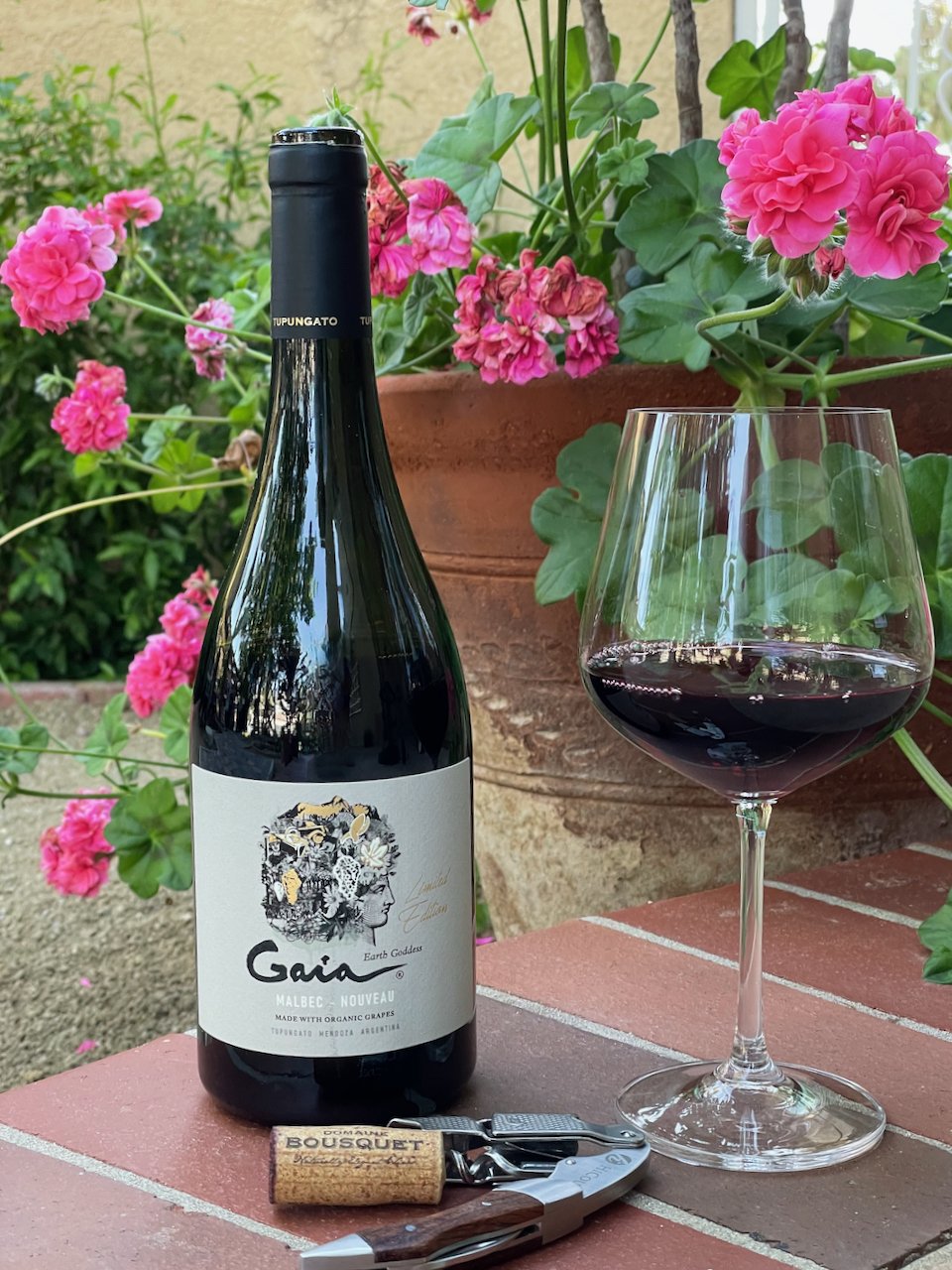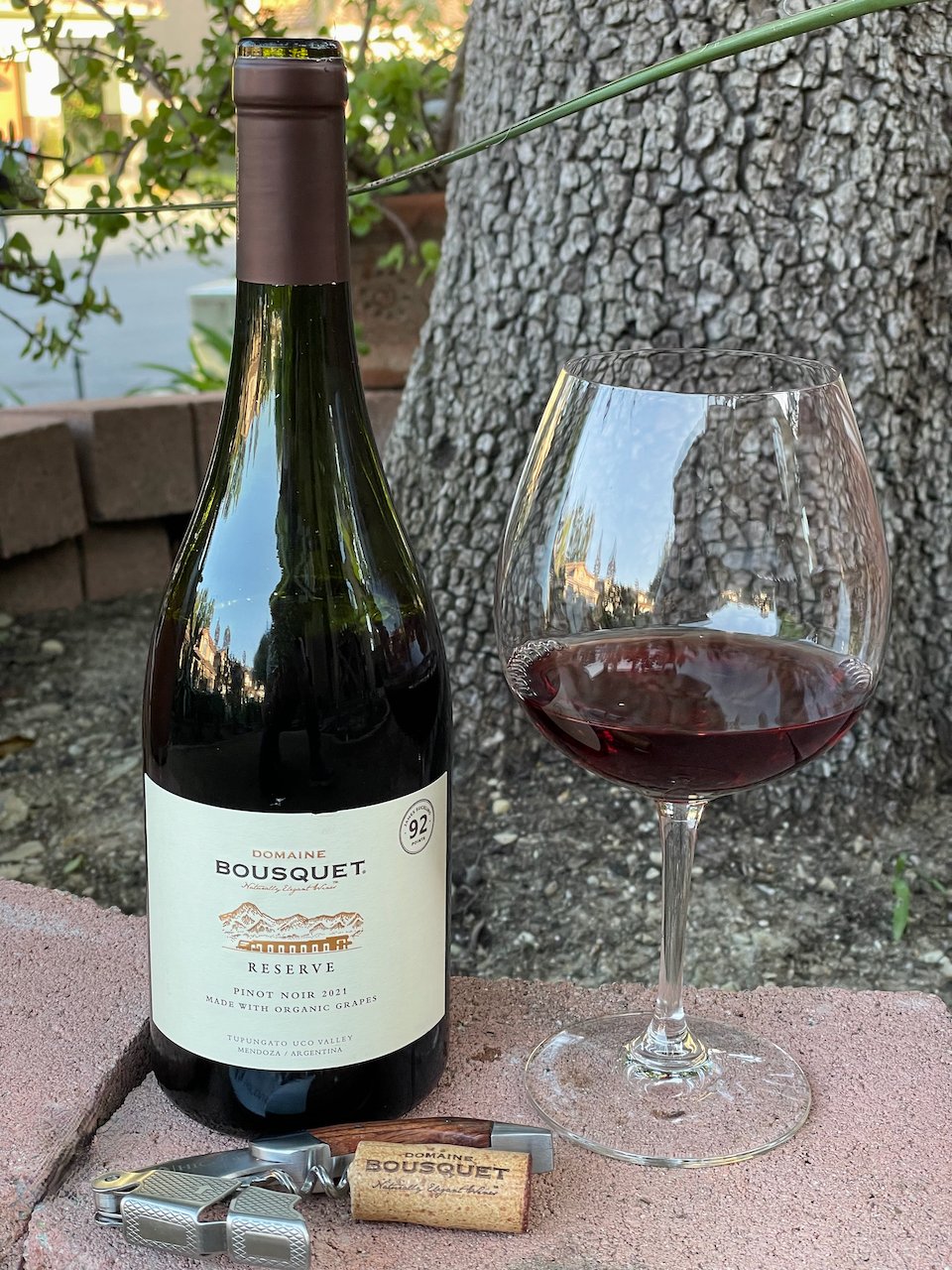2022 Gaia Malbec Nouveau ($20)
Gaia, the Greek goddess of the earth, has been the Domaine Bousquet family's inspiration since founding their winery in 1997 when they pioneered and cleared virgin land in the high reaches of Tupungato's Gualtallary district.
There are several factors that differentiate Domaine Bousquet’s vineyards and their terroir:
The near constant breezes from the Andes to the west which help mitigate heat-stress in this desert-like climate, with its huge day/night temperature differentials,
The sandy soils result in low fertility for desirable vine stress and yet are permeable for good drainage. In addition,
The prevalence of groundwater, with rainfall averaging a scant 8-inches or less per year, groundwater from Andes snowmelt is vital to irrigate the vines drop-by-drop.
This Gaia Malbec Nouveau from Domaine Bousquet is produced from 100% Malbec. It undergoes Carbonic maceration which is a fermentation process where the whole bunches of grapes are placed into a tank without de-stemming. The atmosphere within the fermentation tank is saturated with carbon dioxide while fermentation begins naturally. Once fermentation begins, the weight of the fermenting grapes crushes the surrounding grapes, releasing juices that are also fermented and macerated for 10 days. The wine then goes through a press to separate it from the grape skins and sediments. Finally, a second yeast fermentation takes place to complete the process.
This Gaia Malbec Nouveau is pale purple in color with aromas of red fruit, boysenberry and bubblegum. On the palate this unique medium bodied dry wine has bright red fruit flavors and medium-low tannin and has a wonderful floral finish.
This is a Limited Edition wine from Domaine Bousquet so you’ll be in for a real treat if you can get your hands on this one! And, at the price it’s a really good value too, making it a great fit as this week’s Behind the Cork™ Wine of the Week! Cheers!
14.5% Alcohol by Volume, Acidity 4.95 g/L, pH 3.63, Residual Sugar 0.93 g/L
Disclosure of Wine Sample Submission: I received this sample at no cost for review. The opinions expressed are entirely my own.
Sample Provided by Domaine Bousquet (via Creative Palate Communications)






